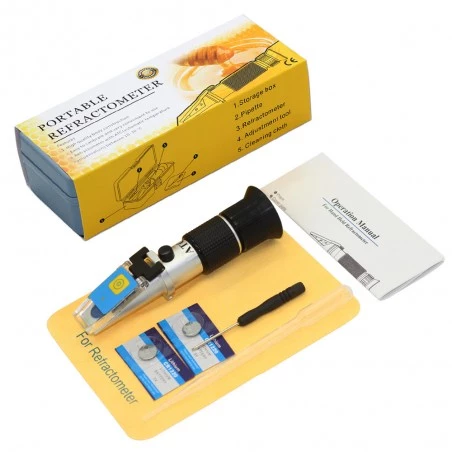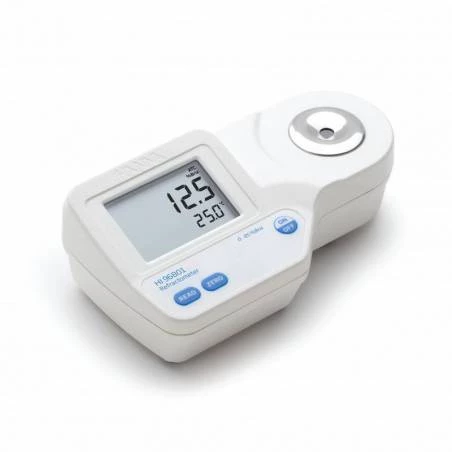




The HANNA Instruments DIST3 Conductivity Meter is an essential tool for beekeepers who want to accurately analyze and monitor the quality of their honey, especially when it comes to honeydew honeys. This portable device measures electrical conductivity (EC) and total dissolved solids (TDS), which is crucial for determining the mineral content and, consequently, distinguishing between floral and honeydew honeys.
Why measure conductivity in honey?
The electrical conductivity of honey is a direct indicator of its mineral content, also known as "ash." In honeydew honeys (originating from insect excretions or plant secretions, such as those from oaks or holm oaks), the concentration of minerals is significantly higher than in floral honeys. According to regulations, honeydew honeys must have a conductivity higher than 0.8 mS/cm to be classified as such. This parameter is crucial not only for regulatory compliance but also for ensuring the authenticity and quality of the final product.
Honeydews from oak and holm oak, common in Mediterranean areas, are known for their dark color and high mineral content, resulting in conductivity values that often exceed 0.9 mS/cm. This conductivity meter can detect those levels with excellent precision, making it an indispensable tool in the characterization of high-quality honeys.
Practical applications in beekeeping
Using the conductivity meter will allow you to accurately identify honeydew honeys, distinguishing them from floral honeys. This is particularly useful during seasons when Quercus species (such as oaks and holm oaks) secrete honeydew, typically in periods of high humidity or after summer storms when the plant exudes honeydew from the base of the acorn. This process is complex and influenced by factors like temperature and humidity, making conductivity measurement a reliable tool to determine if your bees are collecting high-quality honeydew.
Technical specifications:
• Measurement range: 0 - 1999 μS/cm.
• Resolution: 1 μS/cm.
• Accuracy (at 20°C): ± 2% of full range.
• Power supply: 4 x 1.5V batteries, approximately 200 hours of continuous use.
• Dimensions: 175x41x23 mm.
• Weight: 95 g.
How to use the conductivity meter in your daily routine:
• Sample preparation: Dissolve 6 grams of honey in 25 ml of distilled water. This ratio ensures an accurate conductivity reading.
• Measurement: Turn on the conductivity meter, insert the electrodes into the solution, and gently shake to release any trapped bubbles. Ensure that the reading remains stable for at least 5 seconds.
• Results interpretation: Honeys with conductivity values above 0.8 mS/cm (800 μS/cm) are considered honeydew honeys, typical of regions where oak and holm oak species predominate.
• Maintenance: Always clean the electrodes with distilled water after each use and dry them carefully before storing the device.
Key advantages:
• Precise differentiation: Thanks to its ability to measure conductivity with high accuracy, you can clearly and effectively differentiate between floral and honeydew honeys.
• Lightweight and portable: Ideal for fieldwork or lab use.
• Easy to use: No advanced knowledge required, but it offers professional results that will help you improve the quality of your honey.
The DIST3 is the perfect tool to ensure your honeydew honeys meet the highest quality standards, guaranteeing a premium product both for the market and for your most demanding customers.


The HANNA Instruments DIST3 Conductivity Meter is an essential tool for beekeepers who want to accurately analyze and monitor the quality of their honey, especially when it comes to honeydew honeys. This portable device measures electrical conductivity (EC) and total dissolved solids (TDS), which is crucial for determining the mineral content and, consequently, distinguishing between floral and honeydew honeys.
check_circle
check_circle






